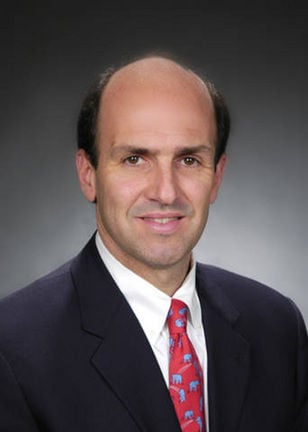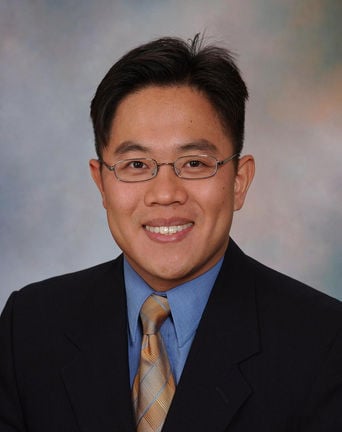Can a pitcher tear his ulnar collateral ligament on one pitch? Is it true that Tommy John surgery to replace the ligament can make you a better pitcher?
Two experts on Tommy John surgery — Dr. Luke Oh and Dr. Thomas Gill — talked about myths and realities of the procedure in separate interviews with The Eagle-Tribune.
Oh is a sports medicine orthopedic surgeon at Massachusetts General Hospital and a Boston Red Sox team physician. Gill is the chief of Massachusetts General Hospital's sports medicine service, a former Red Sox medical director and a current medical director for the New England Patriots. Here are excerpts from the interviews.
Q: Can the ulnar collateral ligament tear on one pitch?
Dr. Oh: Some pitchers may describe throwing a single pitch, they hear a pop and have pain in the medial aspect of the elbow and discover that they have torn the ligament. But these usually happen in people who have been throwing for a while. Their ligament has undergone some attenuation and stretching over their careers. And it very well may be that a single pitch can complete that tear or complete the injury to a full-sized tear.
Q: Is surgery needed for a partial tear?
Dr. Oh: Sometimes it's possible to rehab through it and get back to pitching. But if it's a really big partial tear, it really functionally behaves like a ligament that can't sustain the torque of throwing. So those people may end up having surgery if they fail rehab.
Q: What is the normal recovery time from Tommy John surgery?
Dr. Oh: About 11 months to 16 months. The professional athletes at the minor league and major league levels take closer to the one-year mark. ... But at the high school and college levels, they do take a little bit longer because these young athletes don't have the same rotator cuff strength that major league ballplayers have.
Q: What is the success rate of Tommy John surgery?
Dr. Oh: At the professional level, it's reported anywhere between 82 to 92 percent. At the high school level, it is probably closer to 73 to 75 percent success rate of returning back to the previous level of activity.
Q: What are the three most common causes of a tear of the ulnar collateral ligament?
Dr. Gill: Probably the single biggest factor is how hard you throw. If you look at a lot of the people around the league who are throwing consistently 97, 98, 99 (mph) or certainly those who break 100, they're at an extremely high risk of tearing their ulnar collateral ligament over time. The second (factor) is the mechanics of your throw. For people who just throw a huge amount of breaking pitches, their elbow is going to be under higher stress on the inner side. And then lastly, it's the cumulative effects of throwing.
Q: Is tearing the ulnar collateral ligament something that happens in any other sport besides baseball?
Dr. Gill: It's extraordinarily rare to have to do a Tommy John surgery on someone who is not a thrower or a baseball player. Certainly if you throw a javelin in track and field, that's probably another activity where you see it a lot.
Q: Can the surgery make you a better pitcher?
Dr. Gill: That is probably one of the single biggest misconceptions about the surgery. I've actually had parents come up and say that they would like their son to get Tommy John surgery because it would help his performance. And the kid's totally healthy. That's an incredible piece of misinformation. There's no reason to think that anything we do as surgeons is ever going to be better than what we were created with. The single biggest factor to people coming back and performing better is that for a lot of athletes, one of the reasons they tore their ligament to start with may be that they never really had a structured workout program before. After a Tommy John, if you want to have any chance at all of making it back, then you have to have a very structured, very specific rehab program that incorporates strength conditioning, mechanics. So part of it is that they are in better overall condition than they were before. They had to work on their mechanics again so they're actually paying attention to how they are throwing.
Q: How do you treat a high school or college pitcher with a partial tear?
Dr. Gill: We don't jump to surgery. I'll usually shut him down for three months from throwing and then rehab him after that. To be a professional pitcher, more often than not, it would be extremely difficult to continue to pitch with an ulnar collateral ligament injury. But there are players in Major League Baseball that have a partial tear and they're still fine. And we've actually had a couple come through over the years that had a complete tear and are still pitching in the major leagues. And how they're able to do that is anyone's guess.













Commented
Sorry, there are no recent results for popular commented articles.